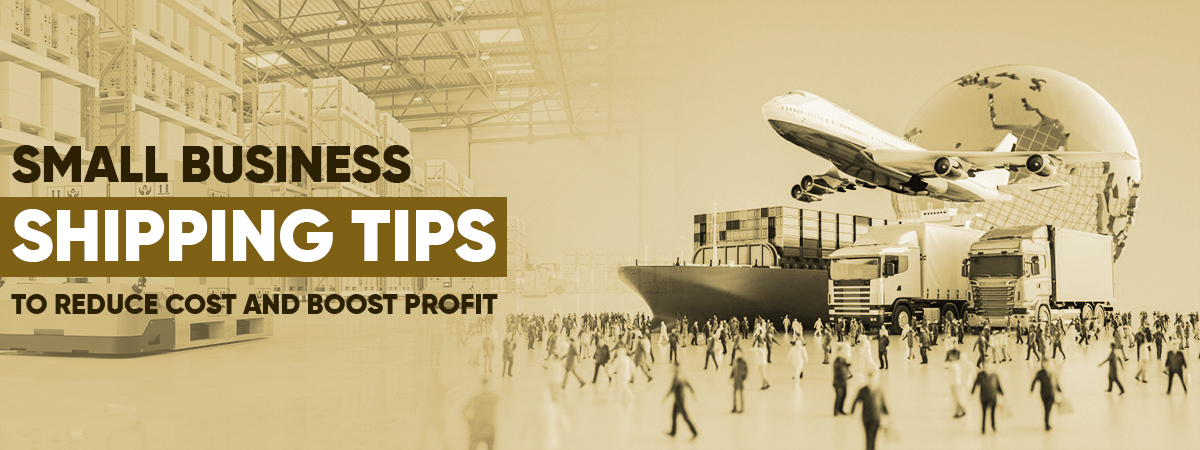- Tokyo : 14:32 |
- Singapore : 13:32 |
- Dubai : 09:32 |
- London : 05:32 |
- New York : 00:32 |
- Sydney : 16:32

We understand that shipping is an important component of every small business, but with so many options available, it can be difficult to decide which road to follow.
Here are a few things to keep in mind to build your business and employ advisors and consultants to amp up your business.
At this point, we've covered some of the most important aspects of your shipping process based on the tips and tricks of major advisors and consultants, such as what goes into shipping expenses, what you should charge your consumers, and how to approach shipping and packaging from a customer experience standpoint.
You're well on your way to becoming an expert in shipping.
If we bookend the fulfillment process, it basically comes down to two things: your orders from wherever you sell and your shipping method.
Shipment and fulfillment management can be outsourced.
The biggest goal of any advisor or consultant is to teach you to manage every step of the fulfillment process for many small business owners.
This control has numerous advantages in terms of how you manage your bottom line and customer experiences. However, this control can be a time-consuming operation.
If you want to increase your shipping and fulfillment management, you have two options: third-party logistics (3PL) and dropshipping.
Outsourcing your warehouse and fulfillment process may be a good choice for your company.
To begin, consider 3PLs. While you will lose some control and pay additional costs, you can have a third-party logistics provider store your inventory and then pick, pack, and ship your orders on your behalf.
Dropshipping has grown in popularity in recent years since it allows you to sell a product without owning or even touching the inventory.
You don't have to stock, package, or transport the product, and you earn a portion of the profits.
However, with this low-risk possibility come minimal rewards. The associated expenditures can reduce your profit margins, so keep an eye on your sales' cost of acquisition.
There is no one-size-fits-all shipping option, and you don't have to utilize a third-party fulfillment business completely or perform everything in-house.
Investigating the possibilities available to your company can assist you in determining the best manner to get your products to your consumers' doorsteps.
Many Advisors and consultants have talked about shipping expenses, managing returns, and shipping technologies, but what if I told you there are even more methods to save money?
Here are some simple guidelines for developing a highly efficient and low-cost shipping and fulfillment strategy.
We have discussed before the necessity of investigating the pricing and factors associated with various carriers and services — but we're here to emphasize how significant it might be to your initial cost.
Similar to buying a car, you visit several showrooms, conduct extensive web research, and even wait for a seasonal sale to finalize your purchase.
Examine your shipping solution in the same way.
Conduct internet research (such as reading this article) to understand the shipping options available, connect with carriers and create connections, negotiate negotiated discounts, and implement a hybrid shipping plan that includes both in-house and 3PL or dropshipping services.
This is an aspect of your e-commerce strategy that you should plan ahead of time.
Using shipping software can not only save you time, but it will also save you money.
By automating shipping, you always can offer the finest rate and free up human resources, allowing you to focus on your marketing and web strategy.
Not ready to enter the world of free shipping? We comprehend.
As a small business owner, it's critical that you set yourself up for success rather than missed margins.
Combining free shipping with a minimum order amount is a wonderful approach to give it at a low cost.
A/B testing can be used to determine which value threshold is more important to your consumer base. Perhaps free shipping for orders of $50 or $100.
By setting an order minimum threshold, you will not only save money on shipping, but you will also discover more about your clients and what drives their conversion.
It's difficult to stomach when an order containing only one product costs the same to ship as order including five.
Depending on the average order amount and the number of items per order, you may want to explore flat-rate delivery.
What's the best part? You'll never have to buy boxes or go to the post office again. USPS flat rate boxes are available in packages of 10 and 25 when ordered online, and these shipments can be auto-scheduled online.
Not only will your customers be pleased to learn that you are taking steps to help the environment, but decreasing your shipping material and footprint can result in significant savings for your company.
There are numerous ways to give back to both the environment and your wallet.
We've gone through everything you need to know to get started with effective e-commerce shipping for your company while using the best tips and tricks from major business advisors and consultants.
According to Mr. Basem Barry, founder & CEO of the B A Barry Group, concentrate on developing a low-cost, customer-centric fulfillment experience that will encourage loyalty and repeat transactions.
Shipping should not be viewed as a cost center for your company.
Consider it an extension of your brand and the customer experience.
If you do it correctly, you may even be able to turn shipping into a competitive advantage as you develop and scale your firm.